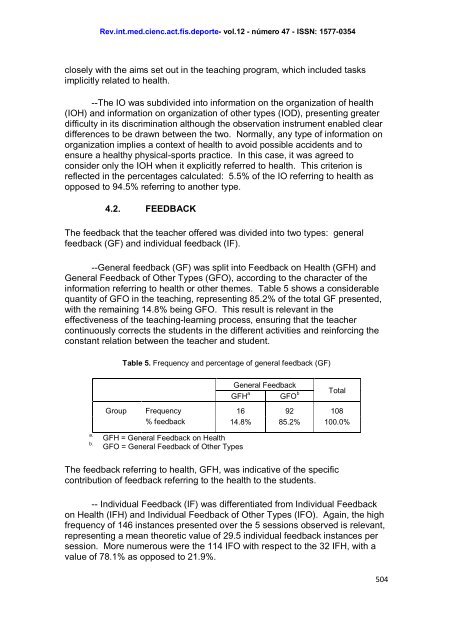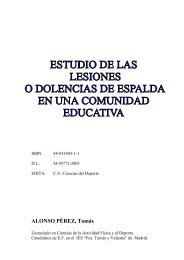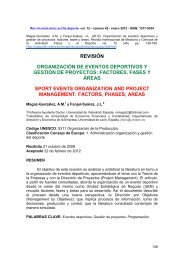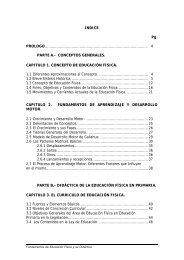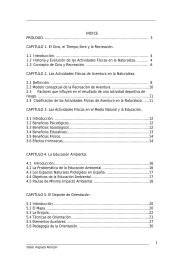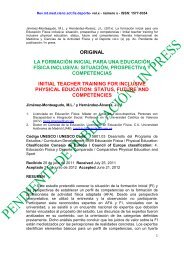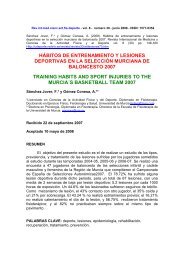English version PDF - Comunidad Virtual CIENCIAS DEL DEPORTE ...
English version PDF - Comunidad Virtual CIENCIAS DEL DEPORTE ...
English version PDF - Comunidad Virtual CIENCIAS DEL DEPORTE ...
You also want an ePaper? Increase the reach of your titles
YUMPU automatically turns print PDFs into web optimized ePapers that Google loves.
Rev.int.med.cienc.act.fís.deporte- vol.12 - número 47 - ISSN: 1577-0354<br />
closely with the aims set out in the teaching program, which included tasks<br />
implicitly related to health.<br />
--The IO was subdivided into information on the organization of health<br />
(IOH) and information on organization of other types (IOD), presenting greater<br />
difficulty in its discrimination although the observation instrument enabled clear<br />
differences to be drawn between the two. Normally, any type of information on<br />
organization implies a context of health to avoid possible accidents and to<br />
ensure a healthy physical-sports practice. In this case, it was agreed to<br />
consider only the IOH when it explicitly referred to health. This criterion is<br />
reflected in the percentages calculated: 5.5% of the IO referring to health as<br />
opposed to 94.5% referring to another type.<br />
4.2. FEEDBACK<br />
The feedback that the teacher offered was divided into two types: general<br />
feedback (GF) and individual feedback (IF).<br />
--General feedback (GF) was split into Feedback on Health (GFH) and<br />
General Feedback of Other Types (GFO), according to the character of the<br />
information referring to health or other themes. Table 5 shows a considerable<br />
quantity of GFO in the teaching, representing 85.2% of the total GF presented,<br />
with the remaining 14.8% being GFO. This result is relevant in the<br />
effectiveness of the teaching-learning process, ensuring that the teacher<br />
continuously corrects the students in the different activities and reinforcing the<br />
constant relation between the teacher and student.<br />
Table 5. Frequency and percentage of general feedback (GF)<br />
General Feedback<br />
GFH a GFO b<br />
Total<br />
Group Frequency 16 92 108<br />
% feedback 14.8% 85.2% 100.0%<br />
a. GFH = General Feedback on Health<br />
b. GFO = General Feedback of Other Types<br />
The feedback referring to health, GFH, was indicative of the specific<br />
contribution of feedback referring to the health to the students.<br />
-- Individual Feedback (IF) was differentiated from Individual Feedback<br />
on Health (IFH) and Individual Feedback of Other Types (IFO). Again, the high<br />
frequency of 146 instances presented over the 5 sessions observed is relevant,<br />
representing a mean theoretic value of 29.5 individual feedback instances per<br />
session. More numerous were the 114 IFO with respect to the 32 IFH, with a<br />
value of 78.1% as opposed to 21.9%.<br />
504


